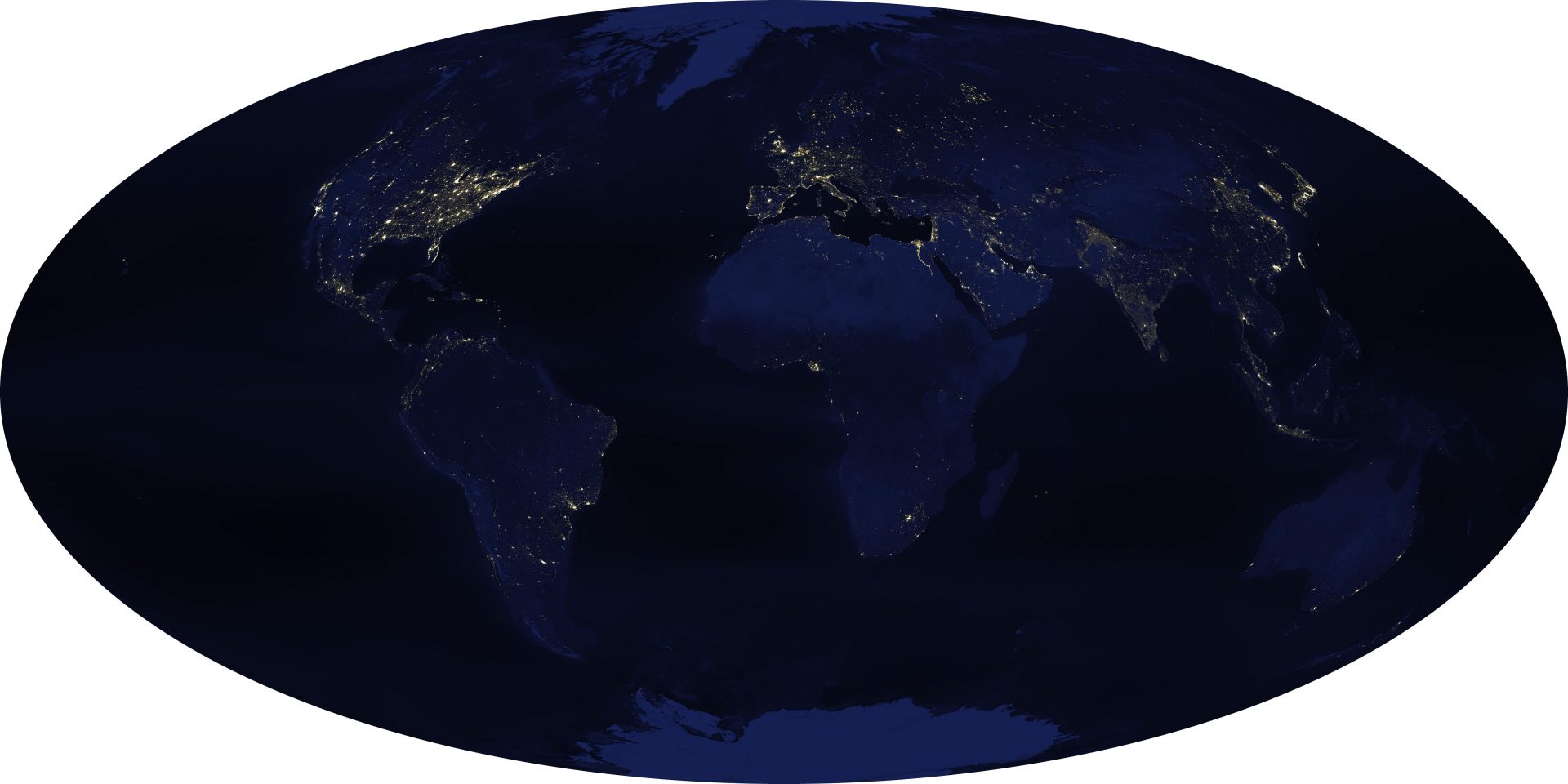Artificial lighting at night is as damaging to humanity as it is for small flying creatures. As the stars and nebulae fade we are blinded from seeing ourselves in relation to the cosmos, losing our perspective — just as moths are trapped in the glare and birds are disrupted in their travel.
What it takes to improve the situation is being more careful in how we use outdoor lighting. The deep sky is becoming invisible all around New Jersey, even here in Hopewell Valley. In fact most of the human population will never see the Milky Way galaxy we are part of, let alone the famed Messier objects of outer space. But many people may not be aware of recent scientific studies revealing that artificial lighting is also seriously harming a number of animals, especially birds and insects. When it becomes impossible for most of the animal kingdom of which we are part to simply look up and see the stars, an essential part of both culture and biology will be lost, with unprecedented and profound implications.
Life evolved and flourished on earth over millions of years in rhythm with diurnal/nocturnal light cycles and seasons. Only in modern times has the natural cadence of night, moonlight, and daylight been disrupted by excessive artificial outdoor lighting at night. Perhaps even worse than direct glare, the reflection and scattering of all those photons by ground and atmosphere is perceived by our eyes as skyglow, the background brightness that obliterates all but the brightest stars. Making it even worse, the installation of energy saving LED outdoor lighting actually worsened the skyglow problem initially, because atmospheric scattering is significantly greater for the shorter wavelength blue light of early LED’s compared to the amber colors subsequently developed.
Both regional and local sources contribute to light pollution. Here in Hopewell Valley, we have to some extent controlled the problem, but if we don’t keep our guard up as development intensifies then it will undoubtedly get worse. Hopewell Township does have one of the best outdoor lighting ordinances in the state (Ordinance 17-90.1, Outdoor Lighting, available on the township website). The first paragraph states: Purpose. The governing body of Hopewell Township does herein find that regulation of site lighting in Hopewell Township is necessary to prevent negative impacts caused by misdirected or excessive illuminance, inappropriate or misaligned light fixtures, glare, light trespass, and skyglow. Such regulation is necessary to encourage conservation of energy and to prevent destructive light pollution. Residences as well as businesses and other facilities come under its jurisdiction. The ordinance was recently updated by the Planning Board to cover the trend to energy efficient LED lighting, including a requirement for amber-colored LED’s (color temperature 2700 K or below).
Mounting scientific evidence and our own eyes reveal declining bird and insect populations locally and around the world. Studies by the Cornell Lab of Ornithology and collaborators found huge decreases in North American avifauna over the past several decades (Rosenberg et al., 2019, Science https://science.sciencemag.org/content/366/6461/120). They estimated a net loss of ~3 billion individual birds across a wide range of species and habitats over the past 48 years, or 29% of the 1970 abundance. Losses are not limited to rare and threatened species, as more than 90% of the loss was among a dozen bird families, including sparrows, warblers, blackbirds and finches. The causes include habitat degradation, urbanization, the use of pesticides, and disruption of navigation in nighttime migrations especially along critical regional flyways.
The web of life is complex and many factors can contribute to declines in populations. Insects provide a vital source of nutrition for a majority of bird species. Studies have revealed that moths and butterflies (order Lepidoptera) are adversely affected by artificial lighting at night. Lepidoptera are very sensitive to both the intensity and spectral character of light. All summer we witness moths inexorably captured by outdoor lights, and sadly we’ve become inured to the phenomenon as if it didn’t matter. The neurological mechanisms behind the “moth drawn to flame” phenomenon are still not well understood. Artificial light interrupts normal circadian rhythms and confuses adult moths, blocking essential behavior including feeding and reproduction, with profound consequences for their survival.
It gets worse as the full life cycles of Lepidoptera are more deeply analyzed. The caterpillars that capture our imaginations as kids and adults are important sources of essential nutrition for many bird species. In addition to protein and fat intake, the bioavailability of carotenoids critical to bird plumage and health is highly dependent on caterpillars and other invertebrates. These are obtained from their feeding on plants, especially native plants. Recent studies have addressed the potential impact of artificial lighting at night on Lepidoptera. A meta-analysis of the literature was reported by Boyes et al., in 2020 in the journal Insect Conservation and Diversity, Is light pollution driving moth population declines? A review of causal mechanisms across the life cycle. https://onlinelibrary.wiley.com/doi/10.1111/icad.12447) The study revealed that artificial light at night disrupts reproduction, larval development, pupation, and individual fitness across numerous moth and butterfly species. Blue light interferes significantly more with moth circadian rhythms than amber-tinted lights. Several aspects of these problems are summarized in Figure 1 below, copied from the Boyes paper cited above. The authors strongly recommend strategies to reduce the negative impact of artificial outdoor lighting on Lepidoptera, consistent with Hopewell’s lighting ordinance. Figure-1_RAP_Mar-9-2021
Figure 1. Adverse effects of artificial night lighting on moths across the life cycle, from Boyes et al., Insect Conservation and Diversity, 2020, Wiley & Sons publishers, the Royal Entomological Society.
Accurate skyglow measurement is complex and difficult, even requiring supercomputer modeling over large area scales. The best data come from orbiting satellite imaging technology to create high resolution maps. A report on the satellite data, which continue to be collected over time, was presented by Falchi et al., 2016, in Science Advances, The new world atlas of artificial night sky brightness, https://advances.sciencemag.org/content/2/6/e1600377. The Visible Infrared Imaging Radiometer Suite (VIIRS), a set of instruments looking down on earth from a polar-orbit satellite launched in 2011 by NASA and NOAA, measures light pollution along a swath 1800 miles wide with resolution 740 meters per pixel when mapped. The findings reveal the extent of skyglow across the globe, but can also be examined on a local scale. The data has been integrated into Bing map layers allowing the reader to zoom into any place on the planet: https://www.lightpollutionmap.info. Figure 2 below, copied from this website, shows that Hopewell Township is on the edge of a gradient of light pollution (color coding, red to yellow = worst skyglow, green to blue = least skyglow). New York and Philadelphia are obviously flood-lit. The north and west sections of Hopewell Township (blue outline) into the Amwells have significantly less skyglow than the south and east sections and Trenton and Rte 1 corridor. The map suggests that open space preservation, along with efforts to mitigate light pollution and reduce lighting sources, have to some degree been successful in Hopewell Township relative to other areas — here in one of the most light-polluted corridors of the entire nation. Figue-2_RAP_Mar-9-2021
Figure 2. Map of central NJ (Hopewell near center) with skyglow radiance from VIIRS satellite data (color coded, green and blue are least), from the interactive website https://www.lightpollutionmap.info.
The International Dark-Sky Association (IDA) is a leading source of knowledge and assistance in the fight against light pollution https://www.darksky.org/. They provide guidance around the largely mistaken notions of outdoor lighting needed for security. Along with the IDA, the US Naval Observatory in Flagstaff AZ has been at the forefront of photometric and astrometric technology to measure light pollution. Astronomers there discovered the relationship of light source color (spectral power distribution) to skyglow brightness, and their work led to the recommendations for amber-color-filtered LED’s for outdoor applications. The situation is summarized in a publication from the US Dept of Energy by Kinzey et al. https://www.energy.gov/sites/prod/files/2017/05/f34/2017_led-impact-sky-glow.pdf.
Land preservation, large scale and local, is one of the most effective ways to preserve both darker skies and threatened animal, insect, and plant species. Fields of native plants, wildflowers, are the most critical habitat for moths and butterflies and their caterpillars, and comprise a vital part of Hopewell Township’s landscape across the Valley. Along with supporting land preservation and habitat conservation, residents can contribute to minimizing light pollution by following the guidelines in the Township’s outdoor lighting ordinance. As the light pollution map shows, it can get worse — yet it can also get better.
Residents can help in the following ways:
- full cutoff shielding of outdoor light fixtures (prevent upward glare)
- use minimum light needed for the task at hand
- shut off or reduce lighting levels when an area is not in use
- use amber-yellow LED lamps outdoors, eliminate blue-tinted lights
- support preservation of open space and native plant habitat
- increase the number of native pants and wildflowers on your property
Submitted by Rex Parker, member of the Hopewell Township Environmental Commission and director of the Amateur Astronomers Association of Princeton
To learn more about this topic, attend a workshop by Rex Parker during Hopewell Valley Green Week. Register Here:http://events.constantcontact.com/register/event?llr=ojvikdxab&oeidk=a07ehp7kfhz5b6d31ad




